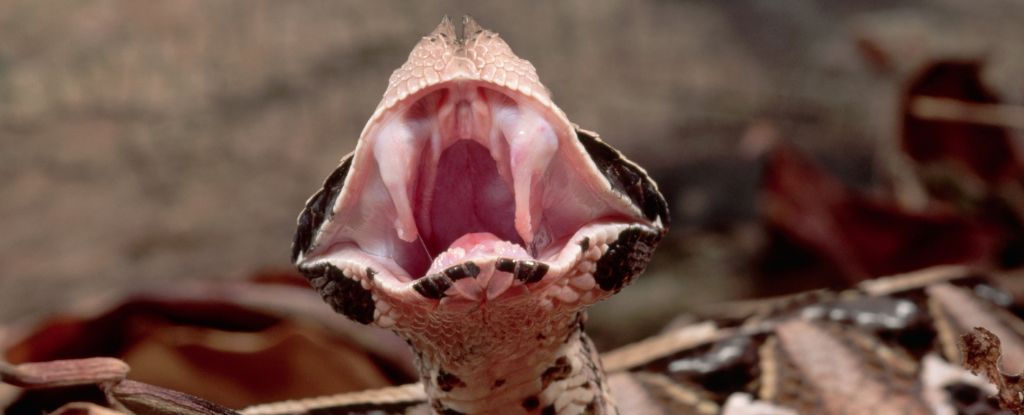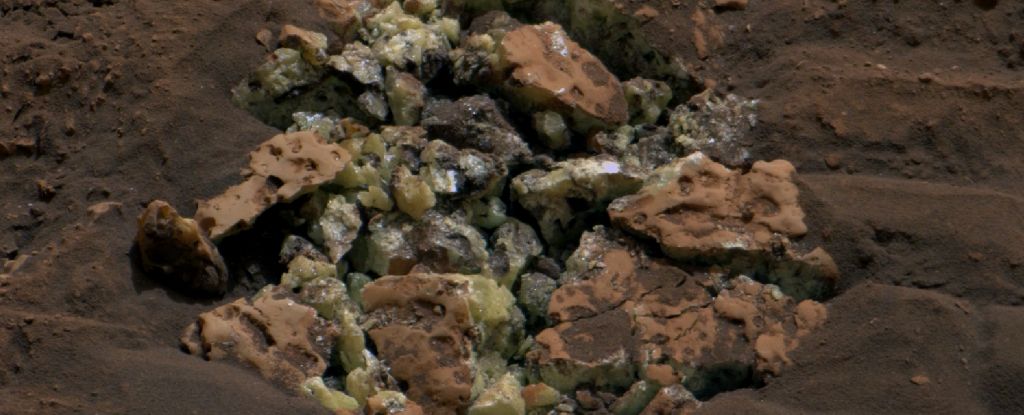A massive viper is wriggling through the forests of Africa right now that has a bite like no other.
Its 5-centimeter-long (2 inches) retractable fangs are the largest of any snake on Earth, capable of taking down prey as large as an antelope.
The Gaboon viper’s (Bitis gabonica) sheer size makes it a fearsome predator for forest creatures, both large and small.
Even though the snake can weigh up to 20 kilograms (45 pounds) and extends roughly 1.8 meters (upwards of 6 feet), it is surprisingly good at ambushing prey.
Its 15-centimeter-wide head is patterned like a fallen leaf, which can fool frogs, guineafowl, mice, or other unsuspecting ground prey that might be trotting by it.
In just a single second, the viper can leap six meters.
frameborder=”0″ allow=”accelerometer; autoplay; clipboard-write; encrypted-media; gyroscope; picture-in-picture; web-share” allowfullscreen>
Some researchers suspect that the Gaboon viper originally evolved its super-long venom injectors to better feed on mammals.
While the viper’s fangs are quite long in absolute terms, they are not so large relative to its head. Technically speaking, the venomous Speckled Forest Pitviper (Bothrops taeniatus) of South America has the longest fangs of any snake relative to its noggin.
The Gaboon viper, however, is different from other venomous snakes because it doesn’t just make a quick poisonous strike. It hangs on to its meal until its prey is entirely dead.
This allows the snake to inject an extraordinary amount of venom into its catch – up to 2,400 milligrams of dry venom and 9.7 milliliters of wet venom.
To put that in perspective, about 100 mg of dry venom is deadly to humans.
This may seem like an unnecessary amount, but compared to other venomous snakes, the Gaboon viper’s poison is relatively low in toxicity.
Even though these snakes could theoretically make enough venom to take down six humans at once, they rarely attack us. And even when they do, there is an available antidote.
Oftentimes, they just hiss at humans to make us go away.
Other mammal relatives are a different matter. In West Africa, scientists found that swinging monkeys, which usually aren’t concerned with ground snakes, are put on high alert when a Gaboon viper is afoot.
In Kenya, researchers observed a Gaboon snake killing a juvenile blue monkey. The predator’s eyes, however, were bigger than its jaws.
The monkey was so large that the snake could not swallow it.
Gaboon vipers are so feared in the African forest that some animals have tried to copy them for safety.
In 2019, scientists found evidence that the Congolese giant toad (Amietophrynus superciliaris) mimics the appearance and sounds of a venomous snake to avoid being eaten.
“Given the relatively large size and therefore calorific value of this toad compared to other species, it would make tempting prey to a large variety of generalist predators, including primates and other mammals, lizards, snakes, and birds,” explains Congolese herpetologist Chifundera Kusamba.
“Many of these predators use vision to find their prey, and because the viper is deadly venomous, they probably recognize the distinctive, contrasting markings from a considerable distance and avoid the toad because of them, receiving a threatening hiss if the appearance doesn’t put them off.”
The Gaboon snake’s fatal reputation clearly precedes it.





